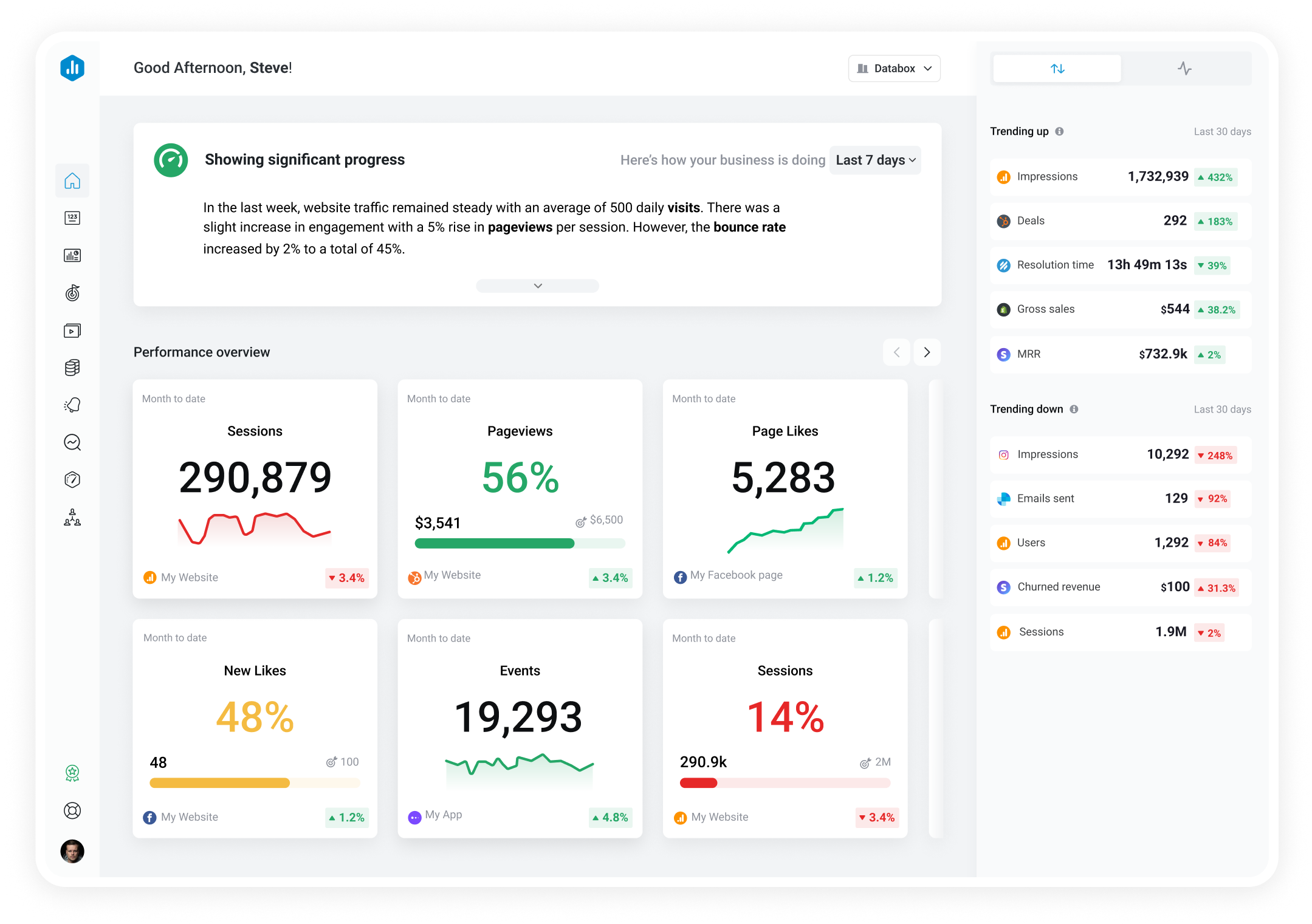Track all of your key business metrics from one screen
GET STARTED
 Xero
Expenses
Xero
Expenses The Expenses metric in Xero tracks the money spent by a business on various costs such as office supplies, rent, utilities, and employee salaries. It helps in analyzing the company's financial health by providing insights into where the money is being spent and how it can be optimized.
With Databox you can track all your metrics from various data sources in one place.
Expenses are the costs a business incurs in the process of generating revenue or carrying out its operations.
Companies record and track their expenses in financial statements to better assess their overall financial health and performance.
The term “expenses” encompasses various types of costs that businesses incur in order to operate successfully.
These costs can include wages and salaries, rent, utilities, office supplies, marketing expenses, taxes, interest payments, and more.
To calculate expenses, you need to sum up all of these costs.
The formula is relatively straightforward:
Expenses = Cost 1 + Cost 2 + Cost 3 + … + Cost n
Let’s say a company incurred the following expenses in one month:
We simply add up all these costs and find that the total expenses for the month amount to $8,700.
Keep in mind that this is a simplified example, and that actual expense calculations can involve more detailed categories and additional factors.
Determining a reasonable expense amount for businesses can vary depending on a wide range of factors, from your industry to the specific business model and size.
That said, here are some general benchmarks that you could use as a starting point:
According to Xero Benchmarks for All Companies, the median value of expense amount in Xero is $37,000.
According to QuickBooks Benchmarks for All Companies, the median value of expense amount in QuickBooks is from $60,000 to $80,000.
Remember that these benchmarks are general guidelines and may not apply universally.
Each business should assess its own financial situation, industry norms, and growth plans to determine what constitutes a reasonable expense amount.
If you want to stay on top of future trends and be able to instantly compare your performance to companies just like yours (in any given industry), you can join our Benchmark Groups – it’s free for everyone!
Managing expenses effectively is a key part of maintaining financial stability and profitability for businesses.
Companies need to implement proper cost-saving strategies to optimize their operations and allocate resources efficiently.
Here are some strategies you can use to try and reduce expenses in your organization:
More resources to help you improve:

Used to show a simple Metric or to draw attention to one key number.

Used to illustrate numerical proportions through the size of the slices.

Used to show comparisons between values.
Databox is a business analytics software that allows you to track and visualize your most important metrics from any data source in one centralized platform.
To track Expenses using Databox, follow these steps:
 Goals
Goals Scorecards
Scorecards Metric Digest
Metric Digest Metric Builder
Metric Builder Data Calculations
Data Calculations Performance Screen
Performance ScreenThe Xero Profit & Loss (P&L) Overview dashboard provides a detailed view of income, expenses, gross profit, and net profit trends. It includes net profit breakdowns by type and visual comparisons of revenue vs. expenses over time.

This report gives a snapshot of financial results using Xero data on income, expenses, cash flow, balance sheet, and overall financials, supporting informed financial decisions.

Expenses are recorded in a company’s financial records through accrual accounting. They are typically recorded as soon as they incur, regardless of when the actual payment is made.
Some common examples of business expenses include rent, employee salaries and wages, utilities (such as electricity and water bills), office supplies, insurance premiums, advertising and marketing costs, travel expenses, equipment maintenance, and interest payments on loans or credit.
Expenses can be categorized into several broad categories:
Operating Expenses: These include day-to-day costs incurred in the regular course of business, such as rent, utilities, salaries, wages, and office supplies.
Cost of Goods Sold: Expenses directly associated with the production or purchase of goods sold by a business, including raw materials, manufacturing costs, and direct labor.
Non-Operating Expenses: These expenses are not directly tied to the core operations of a business and include costs like interest payments on loans, taxes, legal fees, and depreciation of assets.
Capital Expenditures: These are investments made by a business in long-term assets, such as property, equipment, or vehicles, which are expected to provide benefits over an extended period.
Note that specific expense categories can vary depending on the industry and nature of the business.
